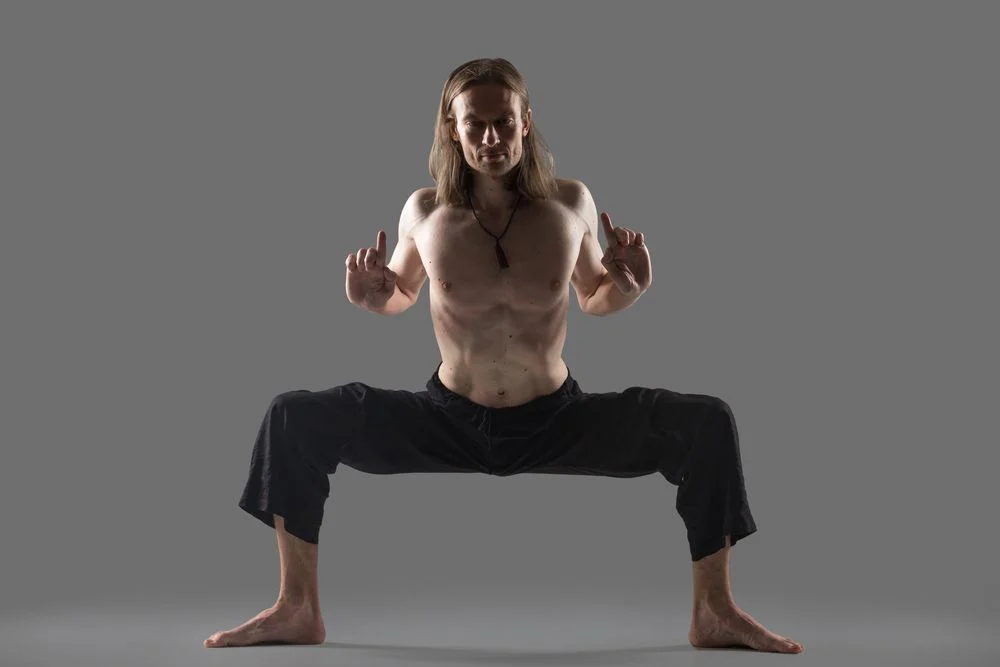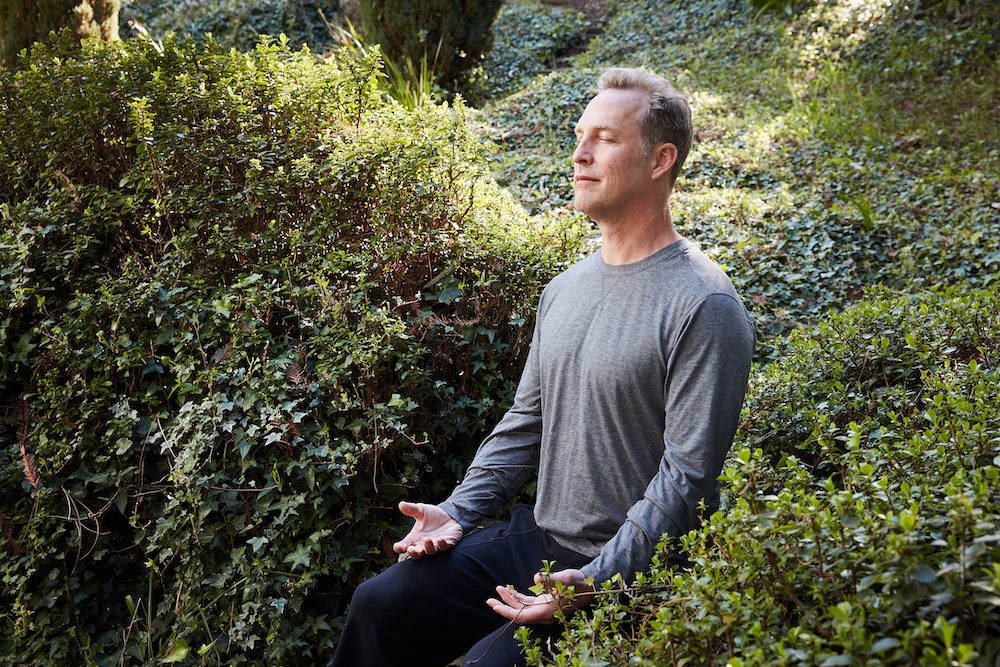Qigong is an ancient and powerful practice with many styles, forms, and ways to learn this art. But Qigong for beginners can be intimidating and confusing.
But when you start practicing it, it will improve your immunity and mental concentration, help manage your stress and alleviate specific ailments. The more you practice it, the more beneficial it gets.
From healing Qigong to Qigong meditation, you can choose any form of it to create your bespoke practice.
What Is Qigong?
Qigong is a Chinese system of breathing, body movement, and mental concentration exercises to improve health, mental focus, and stress relief.
This practice involves harnessing energy in the body by allowing energy pathways called meridians to be open and freely allow energy to flow through. If there is a blockage in a Meridian then an ailment is likely to occur in that area of the body, according to Traditional Chinese Medicine.
Previous names for Qigong were Nei Gong (inner work), Dao Yin (guiding energy), or Yang Sheng (nurturing life). They encompassed any action that creates balance in life’s spiritual, emotional, mental, and physical aspects. Yang Sheng did not exclusively refer to certain Qigong exercises but included a way of life that benefitted these areas as well.
Academically, both China and the US have endorsed that Qigong has been beneficial in relieving asthma, arthritis, cancer, cardiovascular disease, chronic fatigue, fibromyalgia, headaches, and pain.
What Is Healing Qigong?
Qigong healing includes all aspects of Qigong practice that create a healing effect on the body. There are two different sections; internal Qigong and external Qigong.
1. Internal Qigong
This is the personal practice of Qigong, whereby you follow a certain style of movements, breathing exercises, and meditations to achieve a balance of self.
Using the energy you harness with this practice you send it inwards to the body to boost its ability to heal and function.
There are many styles and forms such as the five animals, Soaring Crane, Dragon and Tiger, and Primordial Qigong.
2. External Qigong
Is harnessing the energy in your body and applying it to someone else in the effort to heal and revitalize that person. This practice resembles something like Reiki. It was and is currently used by many Qigong masters and healers throughout the centuries.
This is not recommended for beginners as it takes quite a while to apply this ability.
What Is Qigong Meditation?
Meditation is usually incorporated into the practice of Qigong. Qigong meditation is the isolation of the meditative aspects of Qigong.
Qigong meditation excludes the use of Qigong movements. It is often practiced in a static position; either sitting or standing and sometimes even lying down.
Like in other meditation, it has a focus on quieting the mind and bringing the thoughts into focus without force. The difference between Qigong meditation and normal meditation is the focus on moving and harnessing energy in the body.

Qigong for Beginners Exercises
MaBu (horse stance)
Qigong for beginners wouldn’t quite be complete without the use of MaBu. This movement is commonly used in many Asian martial arts and movement practices.
How to perform MaBu (horse stance):
- Take a wide stance.
- Drop your hip down to knee height while keeping your back up right.
- Make sure ankles are at a 90-degree angle with your shin and your knees are at a 90-degree angle with your leg and shin.
- Turn your feet outwards to about 45 degrees.
- Make sure your hip is either neutral or has a slight tilt backward.
- The back must be straight up right and shoulders pulled back.
- Head is neutral and facing forwards.
- You can either bring your hands straight out in front of you with your arms slightly bent, or bend the elbows behind your shoulder and have your hands next to your shoulders.
- Palms should be facing away from you with the fingers pointing upwards.
Hold this position for short periods such as 10 to 30 seconds at first. Aim to build up to longer periods until you can hold for several minutes.
Below are two easier progressions if you are struggling to do this movement:
Beginner Wall MaBu:
Place your back flat against the wall and drop your body into the MaBu position. The wall will support the weaker structures of your body until you are strong enough to progress.
Beginner Chair MaBu:
Place your hips on the edge of a chair and drop into the MaBu position. The edge of the chair will give you enough support to help focus on the position you need to be in.
Gongbu (bow stance)
Gonbu, also known as Gong Jian Bu, Deng Shan Bu, or the Bow stance. It is a stance often used in Chinese martial arts and specifically Wushu.
Although it is a little bit more dynamic than MaBu, it is very useful in Qigong for beginners. It is a lunge-like motion that creates a stable stance and promotes flexibility in the body.
How to perform Gongbu:
- Step forwards with one foot facing forwards.
- Slightly bend the front knee.
- Bring the other foot backward and face it 45 degrees to the outside.
- Lock the back leg out and keep your back straight and upright.
- You can place one hand facing forwards and the other with a bent elbow to the side of your body.
Hold this position for short periods such as 10 to 30 seconds at first. The aim is to build up to longer and longer periods.
Beginner Variation:
If you are struggling with this stance, change the width of your stance and the range at which you bend your knee. Keep at a range you can manage and when you feel more confident, then increase the range.

Energy Qigong for Beginners
To feel the true effects of Qigong, it is beneficial for beginners to be able to experience the movement of energy in the body.
Here are two exercises to help achieve this:
Sitting qi flowing exercise
- Sit on the edge of a chair with your back upright and your feet flat on the ground.
- Imagine your body is light and floating while your neck floats above your relaxed neck.
- Breathe in and as you breathe in, raise your arms to your shoulders. imagining the energy in your body climbing up your spine and into your head.
- Exhale and drop your arms slowly. Imagine the energy in your body running down your spine to your hips.
- Do this several times.
Qigong ball rolling
- Find a comfortable place to sit or stand.
- Shoulders back and back upright.
- Place one palm facing upwards near your belly.
- Place the other palm facing downwards above the other palm.
- Keep a good space between the palms as if a ball was between your hands. Start moving both palms around this imaginary ball feeling the energy between your hands as you move.
- Try to increase this energy as you practice.
It is the simple things that make the process of learning easier. By establishing the basic practices we have recommended above, your Qigong journey will kick off to a strong start.
Qigong for beginners is a practice that requires the smallest steps possible. We have provided those above, yet the other important element is to simply begin practicing.
Start your journey to becoming a healthy, happy, and focused Qigong student today and say goodbye to your stress, chaos, and illness.









